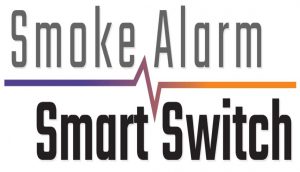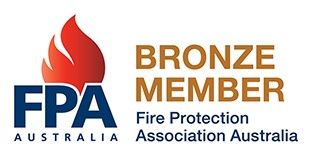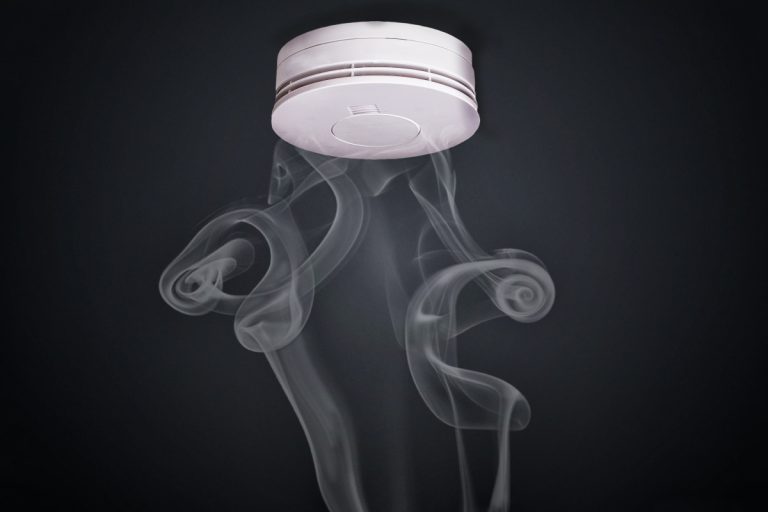
IT GOES without saying that keeping your home safe from house fires is crucial. This is the reason all Australian homes must have smoke alarms fitted.
There are many different kinds available and this can make it confusing when choosing which ones to buy
Smoke Detector Types
 Basically smoke alarms in Australia come in two types – ionisation smoke alarms, which have inside them a small amount of radioactive material which sensed smoke particles in the air, and photoelectric alarms which use a photocell, beaming a small light away from the smoke alarm. If the light identifies smoke particles in the air, the alarm goes off.
Basically smoke alarms in Australia come in two types – ionisation smoke alarms, which have inside them a small amount of radioactive material which sensed smoke particles in the air, and photoelectric alarms which use a photocell, beaming a small light away from the smoke alarm. If the light identifies smoke particles in the air, the alarm goes off.
Photoelectric alarms are usually more sensitive and are favoured by all Australian state fire authorities.
Apart from these two primary types of smoke alarms, there are two other categories – Carbon Monoxide alarms which target central heating systems in homes and Heat Alarms which are used most often in kitchens to pick up heat instead of smoke.
These two alarms should be used in conjunction with either of the two primary types of smoke alarm.
Should You Choose Battery Powered Smoke Alarms or Hard-wired Alarms?
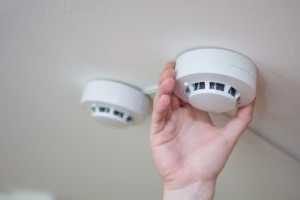 The majority of Australia’s fire authorities favour hard wired alarms. In these, your 240 volt smoke alarm is connected to your home’s electrical supply with a battery powered backup.
The majority of Australia’s fire authorities favour hard wired alarms. In these, your 240 volt smoke alarm is connected to your home’s electrical supply with a battery powered backup.
If, for some reason, your fire alarms can’t be connected to your mains power, you can use battery powered smoke alarms. In these you are required to use units that are powered by a lithium battery and they must be changed every ten years
What Are the Prices of Smoke Detectors?
The price of standard photoelectric smoke alarms begin around $10 and range up to the $100 markas the models get more advanced.
When it comes to carbon monoxide smoke alarms you’ll find prices start at around $50 and heat alarms will cost even less
What Number of Smoke Alarms Are Required for My Home?
Each Australian state has different requirements:
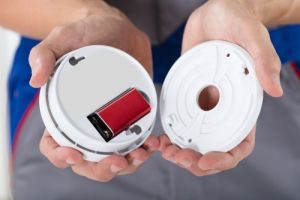 NSW: Fire and Rescue NSW says you must have a minimum of one smoke alarm per storey. In addition, they recommend that smoke alarms are installed in every bedroom, in all living spaces like hallways and stairwells, also the garage. They prefer photoelectric smoke alarms.
NSW: Fire and Rescue NSW says you must have a minimum of one smoke alarm per storey. In addition, they recommend that smoke alarms are installed in every bedroom, in all living spaces like hallways and stairwells, also the garage. They prefer photoelectric smoke alarms.
VIC: Metropolitan Fire Brigade insists one at least one smoke alarm in every home, and they also recommend photoelectric alarms.
QLD: Queensland Fire and Emergency Services says that a photoelectric alarm is required on every level. THey must be either mains-powered or be fitted with a 10 year battery.
SA: Government of South Australia says you must have at least one smoke alarm per dwelling, specifying a smoke alarm that is mains-powered or 10-year battery type. They might require you to have interconnection as well.
WA: Department of Fire & Emergency Services specifies that dwellings must have a mains powered smoke alarm per storey. Battery powered alarms are permitted if the home isn’t connected to mains power.
NT: Northern Territory Fire & Rescue Services insist all residential properties must have a functioning smoke alarm. Their law requires an upgrade to mains-powered or 10-year battery photoelectric alarms.
ACT: ACT Emergency Services Agency declares homes renovated or built after 1997 must have a minimum of one mains-powered alarm installed. They recommend photoelectric smoke alarms. If your ionisation smoke alarm’s expiry date is imminent, you should consider replacing it.
TAS: Tasmanian Government requires all rental properties and to have at least one 10-year lithium battery alarm or preferably mains-powered alarm installed.
Fire alarms Available in Australia
Family First
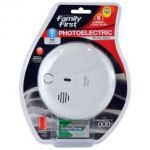 Family First is Australian-owned. Its range of smoke alarm products includes the photoelectric type, which are available from around $13 to $25. They also sell twin packs.
Family First is Australian-owned. Its range of smoke alarm products includes the photoelectric type, which are available from around $13 to $25. They also sell twin packs.
Features a hush button – to silence false alarms – and an escape light to give you a visible point of reference so it’s easier to escape through heavy smoke. The siren on all Family First smoke alarms is 85 decibels.
First Alert
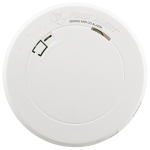 First Alert provides photoelectric, carbon monoxide and combination alarms. Importe from the USA, First Alert prices range from approximately $40 to $60.
First Alert provides photoelectric, carbon monoxide and combination alarms. Importe from the USA, First Alert prices range from approximately $40 to $60.
Dual sensors and a built-in 10-year battery feature in their combination photoelectric smoke and carbon monoxide alarm. Their range also features alarms that have an escape light which activates once the alarm goes off. Noise level is also listed at 85 decibels.
Fire Pro
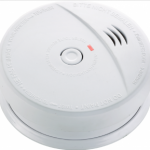 Fire Pro’s modest range of smoke alarms also claim an 85 decibel alarm, also a test button, and a low battery indicator. Alarms have a hush button and a photoelectric 10-year lithium battery.
Fire Pro’s modest range of smoke alarms also claim an 85 decibel alarm, also a test button, and a low battery indicator. Alarms have a hush button and a photoelectric 10-year lithium battery.
In addition to their smoke alarm range, Fire Pro also offer a wall-mounted gas detector to detect gas leakages. Their price range is from $13 to $50.
Quell
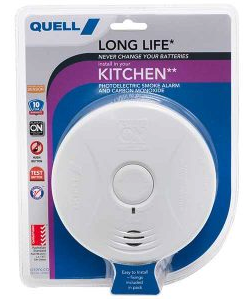 Quell, owned by Chubb, who enjoy more than 100 years of experience in Australia offer an all-inclusive array of smoke alarms. They separate their models by room type, labelling them as Kitchen, Hallway, Garage and Bedroom.
Quell, owned by Chubb, who enjoy more than 100 years of experience in Australia offer an all-inclusive array of smoke alarms. They separate their models by room type, labelling them as Kitchen, Hallway, Garage and Bedroom.
Prices range from $25 to $35 for single packs and twin packs are also available. Features include a low battery warning light and test/hush buttons.
They can also provide interconnected alarms, meaning that when one unit is triggered, all the others will go off.
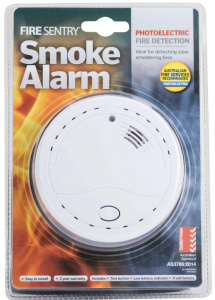
Fire Sentry
Fire Sentry offers fire extinguishers as well as fire alarms. Their Fire Sentry Photoelectric Smoke Alarm with Test Button costs just $15.
Easy to install and operated on a 9V battery, it also has a test button and a low battery indicator.
It also features an auto-reset function for after all the smoke clears. It comes in an insect resistant case.
What to Look for When Buying a Smoke Detector
 Smoke alarms come with the features required by the Australian Standard, but there are additional functions available:
Smoke alarms come with the features required by the Australian Standard, but there are additional functions available:
- 10-year battery: When you can’t connect hard-wired units, battery powered models with a 10-year lithium battery are mandatory.
- Hush button: You can push this button to kill the alarm for false alarms like when burnt toast releases minor kitchen smoke. Some alarms even have a remote control to stop the siren while the smoke dissipates.
- Escape light: Escape lights illuminate when the alarm goes off, helping you find a safe path outside if the power’s gone off.
- Test button: Press this to check if the alarm is working. You can also test some models by shining a torch on them.
- Interconnectable: most mains-powered, and some battery-powered alarms can connect to each other. If one alarm is set off, all the others go off as well, making sure everyone gets alerted.
What is the Bottom Line on Smoke Detectors in Australia?
Smoke alarms are compulsory in homes all around Australia. They should be tested regularly. You should:
- Test your units every month
- Vacuum the area around the alarm vents annually
- You should also test the alarm’s battery and replace it. If it’s a 10 year lithium battery, replace the whole alarm instead.
